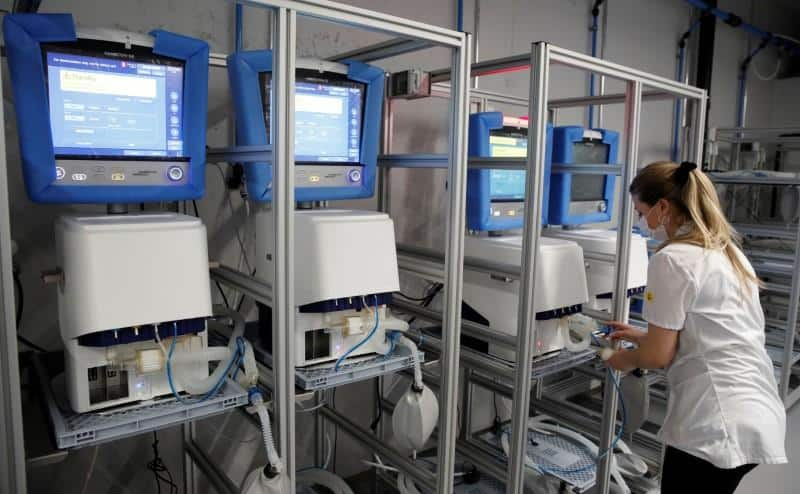SOURCE: ZEE NEWS

In a bid to meet the requirement of ventilators for coronavirus COVID-19 infected patients, a team of engineers at the Indian Institute of Science (IISc) is currently building a prototype of an electro-mechanical ventilator from scratch, using only components found or made in India, based on guidelines issued by the UK Medicines and Healthcare products Regulatory Agency, according to an IISc statement.
“We are building it so that anyone can use it free of cost,” says TV Prabhakar, Principal Research Scientist at the Department of Electronic Systems Engineering (DESE) and one of the founders of the project, adding “It is expected to be ready within the next couple of weeks.” A ventilator can be a life-saver for patients whose lungs are damaged by the COVID-19 infection, but India, like all countries grappling with this pandemic, is likely to face a large shortage of ventilators.
“For the last 10 days, we have been working day and night to get this technology going,” says Gaurab Banerjee, Associate Professor at the Department of Electrical Communication Engineering and one of the project coordinators, adding “We hope that by the end of April, manufacturers can have their own prototypes done, which they can scale up very quickly.”
Currently, there are about 40,000 ventilators available across the country, but if the number of severe cases surges, several thousand more may need to be produced very quickly.
According to IISC, a well-designed ventilator has built-in sensors and actuators that allow doctors to set the volume and pressure of gas delivered to the patient precisely, which depends on the severity of their illness. But many ventilator components are currently not manufactured in India. This prompted the IISc team to build some components and co-opt others. To store and mix air and oxygen, for example, they simply reused sedimentation tanks found in household RO water purifiers.
“The mixing process that we have come up with has parallels to those in gas turbines and industrial burners, where the ratio of fuel and oxidizer is carefully controlled,” says team member Pratikash Panda, Assistant Professor at the Department of Aerospace Engineering.
To check pressure levels, the team used sensors similar to those used to detect air pressure in car tyres. Controlling the pressure at which gas is pumped into the patient’s lungs is crucial, akin to how using an industrial pressurized hose to water plants instead of a garden hose can cause severe damage. The team is also developing a flow rate sensor, which shows exactly how much air is flowing into the patient’s lungs, from scratch.
“By using fundamental concepts of fluid and gas dynamics, we are able to accurately estimate and control the pressure, volume and oxygen concentration of the air delivered to the patient,” says team member Duvvuri Subrahmanyam, Assistant Professor at the Department of Aerospace Engineering.
The team is also getting inputs from doctors to simplify the interface and create a dashboard preloaded with approved settings. This would allow it to be operated quickly in an emergency even by untrained technicians or nurses.
from Indian Defence Research Wing https://ift.tt/343GnO9
via IFTTThttp://idrw.org
No comments:
Post a Comment